This post may contain affiliate links. Please read my privacy policy.
Kung Pao Chicken is a classic Chinese stir-fry dish with tender chicken and crunchy peanuts in a savory, spicy Kung Pao sauce. This beginner-friendly, easy and authentic recipe pairs perfectly with steamed rice for a satisfying meal at home.
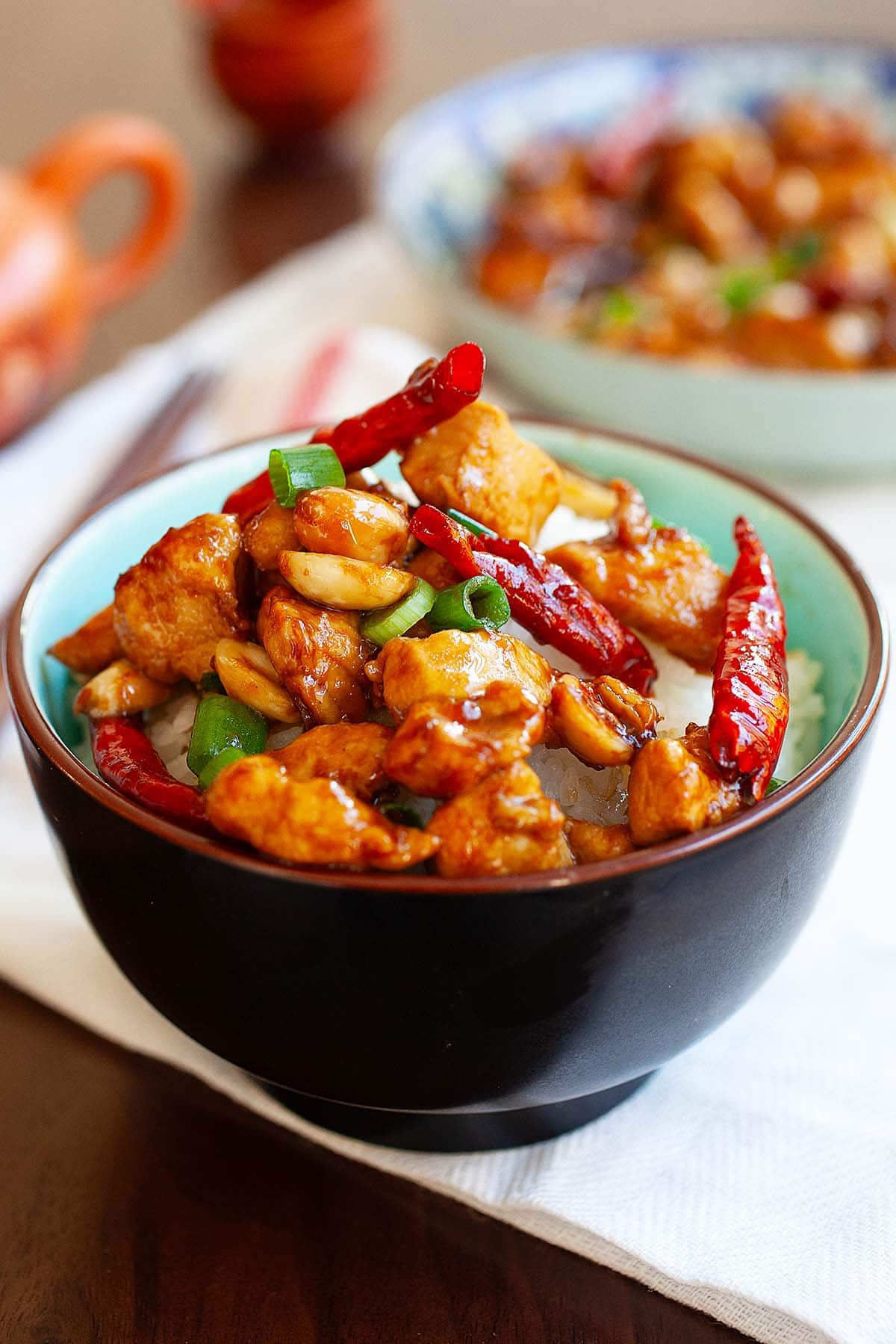
Table of Contents
The Best Kung Po Chicken
Kung Pao Chicken, sometimes spelled as Kung Po Chicken, originates from the Sichuan province in China. The Chinese name is gong bao ji ding (宫保鸡丁), but some restaurants spell it as Gong Bao Chicken or Kung Po Chicken.
This spicy chicken dish comes with a mouthwatering Kung Pao sauce. It is a popular Chinese takeout item and one of the most beloved dishes at Chinese restaurants in the United States, just like Orange Chicken, General Tso’s Chicken and Sesame Chicken.
As the author of the best-selling Chinese cookbook Easy Chinese Recipes, I developed this simple Kung Pao Chicken recipe specifically for home cooks, including beginners in Chinese cuisine. I assure you that this is the best and most authentic recipe, rivaling the takeout from your favorite Chinese restaurant. It has been tried and tested by home cooks worldwide. Be sure to check out my video guide to make this recipe perfect every time!
Check out my Sweet Chili Chicken next for more easy and delicious chicken dishes!
Authentic Kung Pao Chicken Recipe
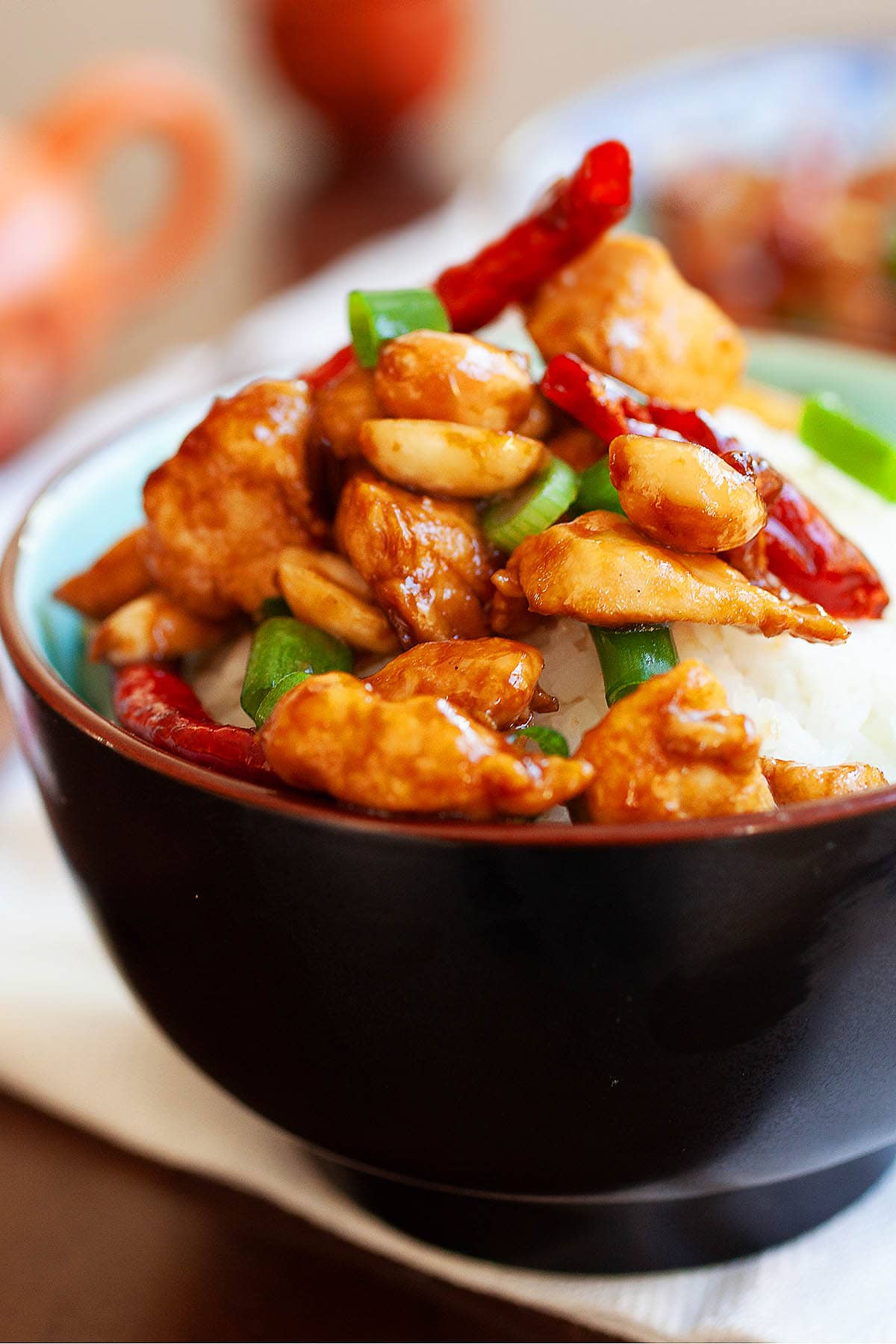
In China, the authentic recipe includes Sichuan peppercorns for their numbing effect and plenty of dried red chilies to achieve the “mala” (spicy and numbing) flavors.
In the US, to cater to a broader palate, the dish often includes vegetables such as carrots, water chestnuts, celery, zucchini, bell peppers, and broccoli. While the Americanized version available here may not be authentic, it remains incredibly delicious and enticing.
Pro Tip: If you’re a seasoned home cook who values authenticity, consider adding 1 teaspoon of Sichuan peppercorns and 1 teaspoon of hot chili oil to my recipe! Feel free to adjust the amount of dried red chilies to suit your taste preferences.
Ingredients You’ll Need
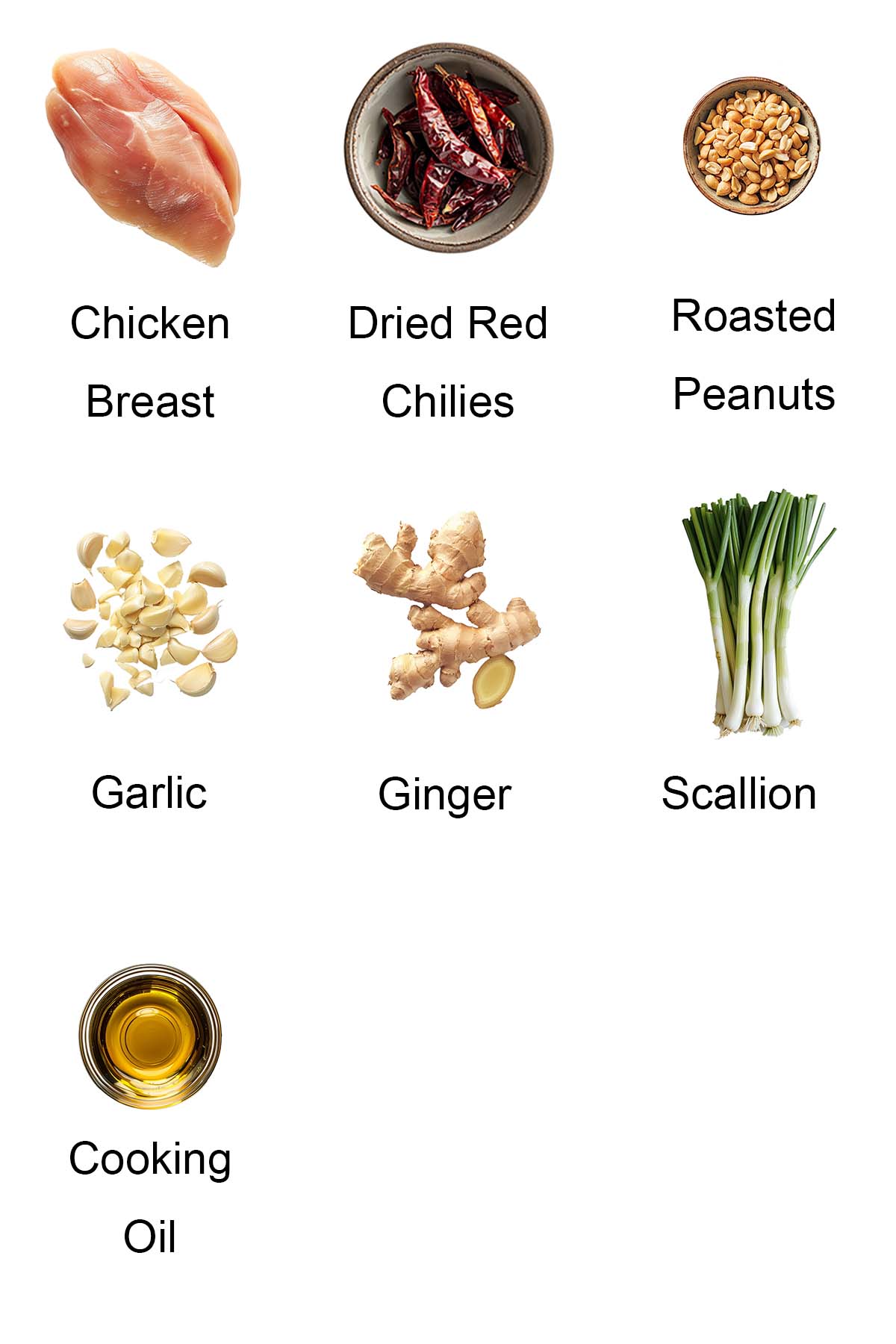
These ingredients come together to create the distinctive sweet, savory, and spicy profile that this dish is famous for.
- Chicken breast: while you can use chicken thighs, chicken breast becomes tender and juicy after being velveted with cornstarch, soy sauce, Shaoxing wine, and a bit of oil.
- Dried red chilies
- Roasted peanuts: I used Planters brand dry roasted peanuts.
- Garlic and ginger
- Scallion: the vibrant green color of scallions creates a striking contrast against the rich, dark Kung Pao sauce and the golden-brown chicken cubes.
Kung Pao Sauce Ingredients
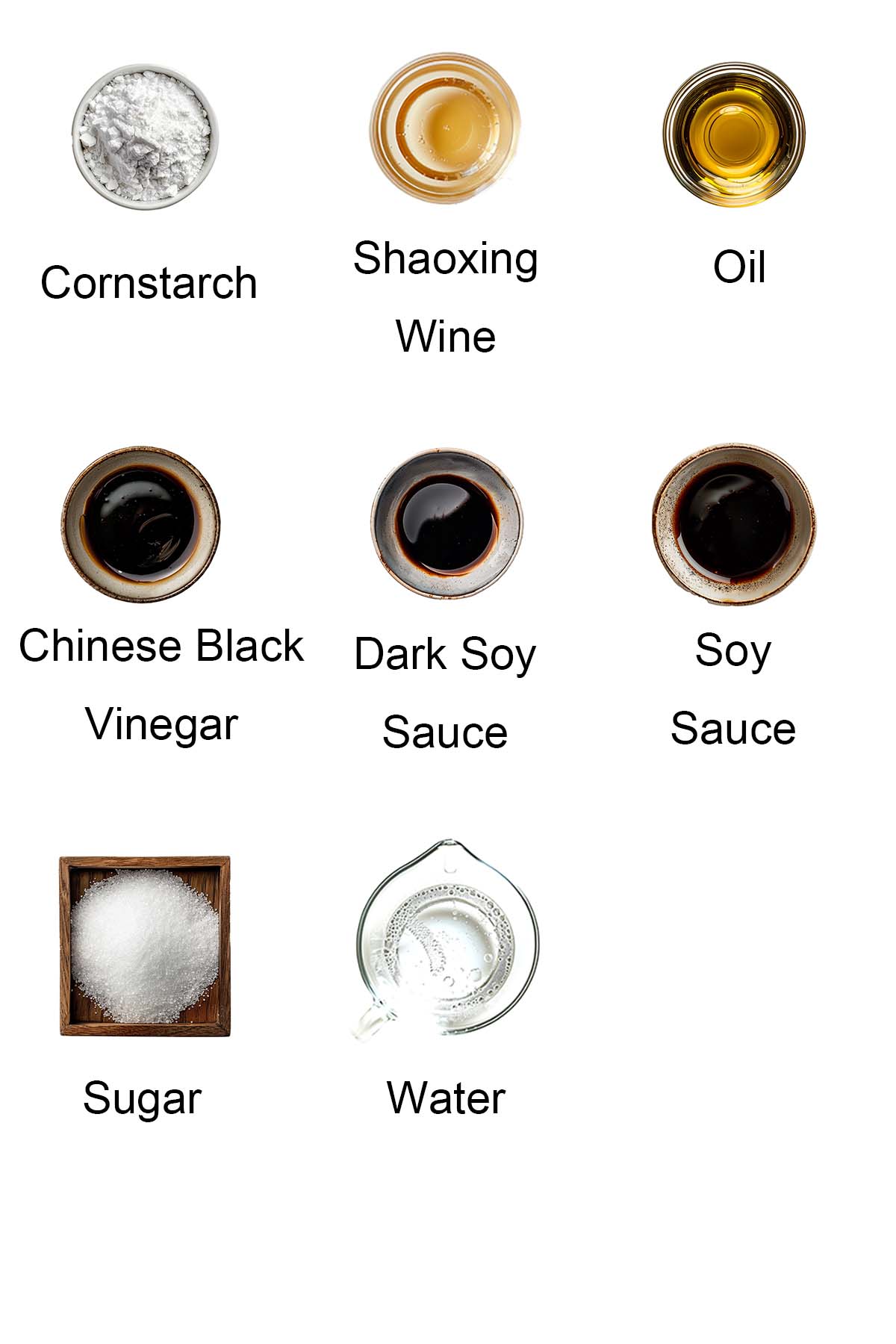
Kung Pao Sauce is the soul of this recipe. The sauce is brown in color, mildly spicy and dangerously addictive. It tastes salty, sweet and vinegary.
- Chinese black vinegar – this is the secret ingredient of the Kung Pao sauce, lending tanginess, depth, and unique aromas to the finished dish.
- Soy sauce
- Dark soy sauce
- Sugar
- Water
- Cornstarch
Shopping Guide: For the best and most authentic taste profile, go for Chinese Chinkiang Black Vinegar made from glutinous rice and has a deep, malty, slightly smoky and sweet flavor. You can find Chinkiang Black Vinegar from Chinese or Asian stores across the United States, or buy online. I recommend Gold Plum Chinkiang Vinegar (镇江香醋) You may use rice vinegar, red wine vinegar or apple cider vinegar as substitute.
See the recipe card for full information on ingredients.
Recipe Variations And Additions
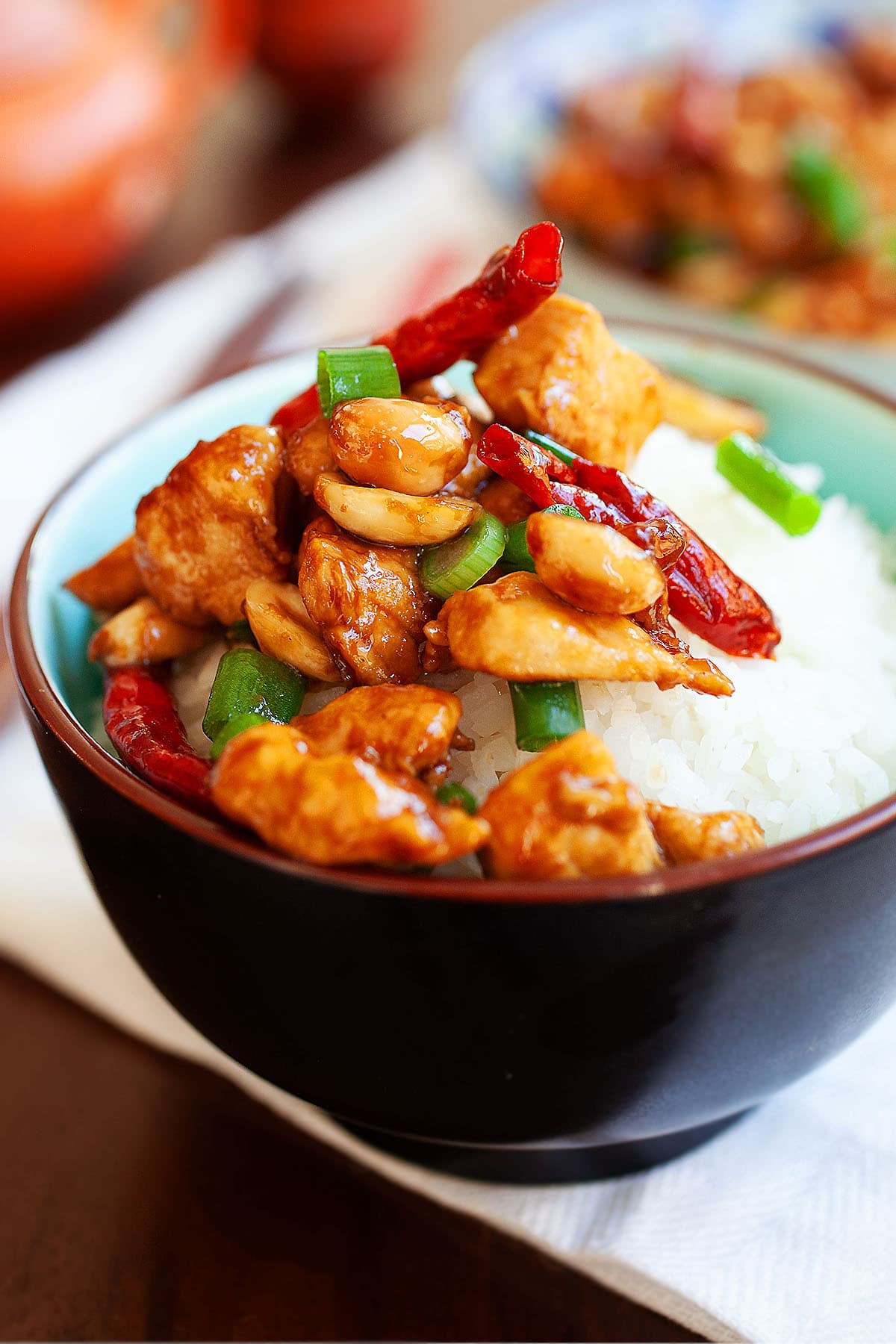
This recipe is highly versatile, offering numerous variations, ingredient substitutions, and additions. One of my favorites is Kung Pao Shrimp, featuring succulent, bouncy shrimp bathed in the flavorful Kung Pao sauce. If you are a beef lover, you can make Kung Pao Beef. Here are a few variations to try in your home kitchen.
Modern Twist: Give a contemporary twist to traditional Mexican tacos by making Kung Pao Chicken Tacos. They are absolutely delightful and offer a unique fusion of Asian and Mexican flavors!
Change the Protein: Substitute chicken with tofu to create Kung Pao Tofu, perfect for plant-based lovers. Tofu absorbs the flavorful sauce beautifully, providing a delicious vegetarian option.
Add Vegetables: Enhance the texture and taste by adding extra vegetables like bell peppers and zucchini, similar to the style of Panda Express Kung Pao Chicken. Alternatively, you can focus on a single vegetable, such as eggplant or cauliflower, and cook it according to the recipe.
These variations cater to different tastes and dietary preferences while keeping the bold and spicy flavors of Kung Pao dishes that everyone loves!
How To Make Kung Pao Chicken
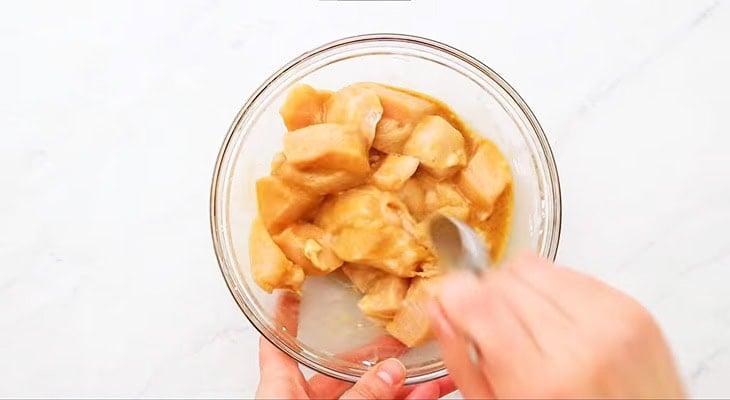
First, give the chicken a quick rinse under water and then pat it dry with a paper towel. After that, chop it up into small cubes and let it marinate for about 30 minutes.
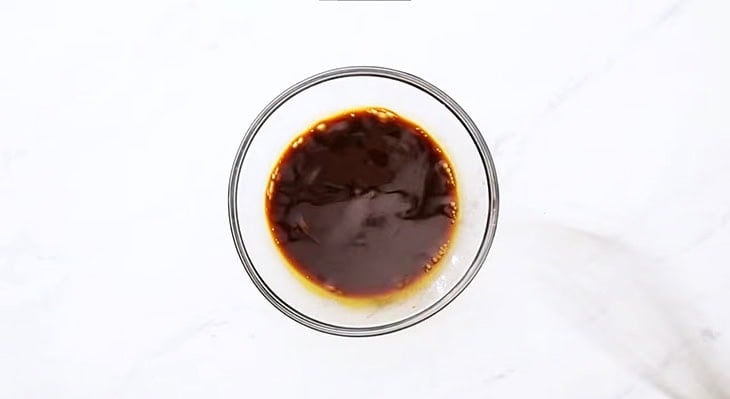
Grab a small bowl and mix together all the sauce ingredients. Set it aside for now.
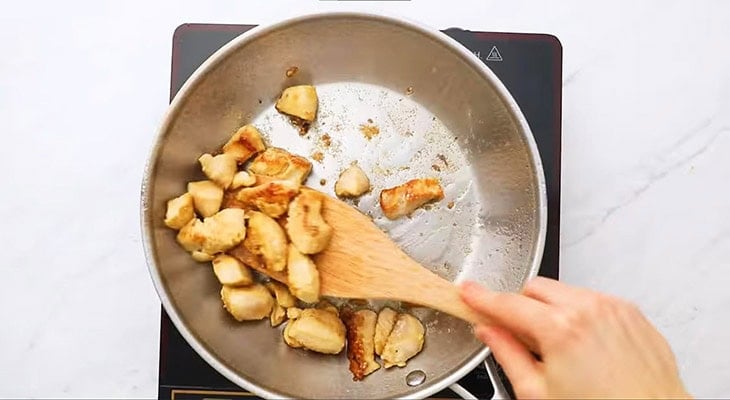
Heat up a wok or skillet with about a tablespoon of oil, then stir-fry the marinated chicken until it’s about 70% cooked. Once it’s there, take it out and set it aside.
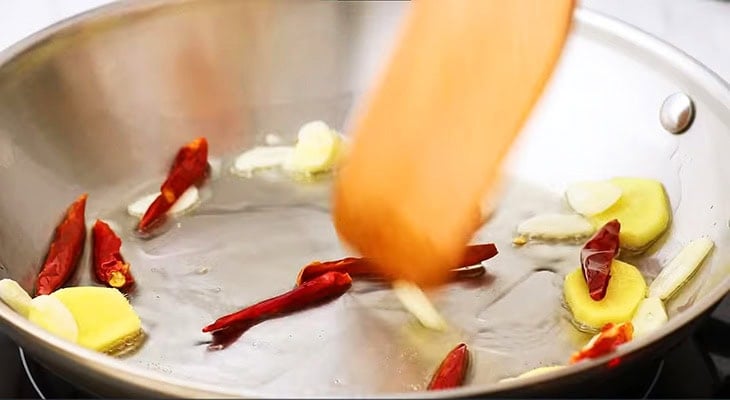
Give the wok or skillet a quick clean, then heat up the rest of the oil until it’s nice and hot. Toss in the ginger and garlic, stir-fry them for a few seconds, then throw in the dried red chilies.
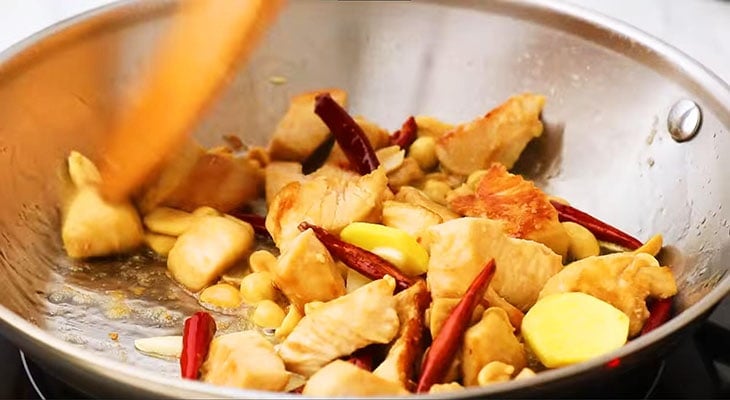
Let the dried red chilies sizzle for a bit until they smell nice and fragrant. Then, toss the chicken back in and give it a quick stir. Once it’s looking good, throw in the roasted peanuts and keep everything moving!
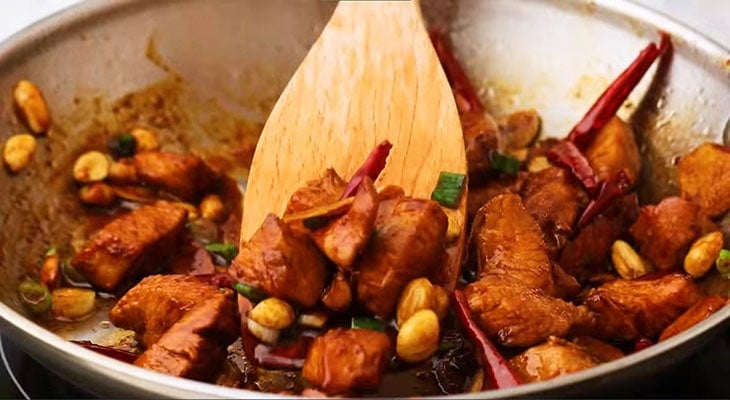
Pour in the sauce and keep stirring until the chicken is fully coated and looking glossy. Finally, toss in the scallions and give everything a good mix.
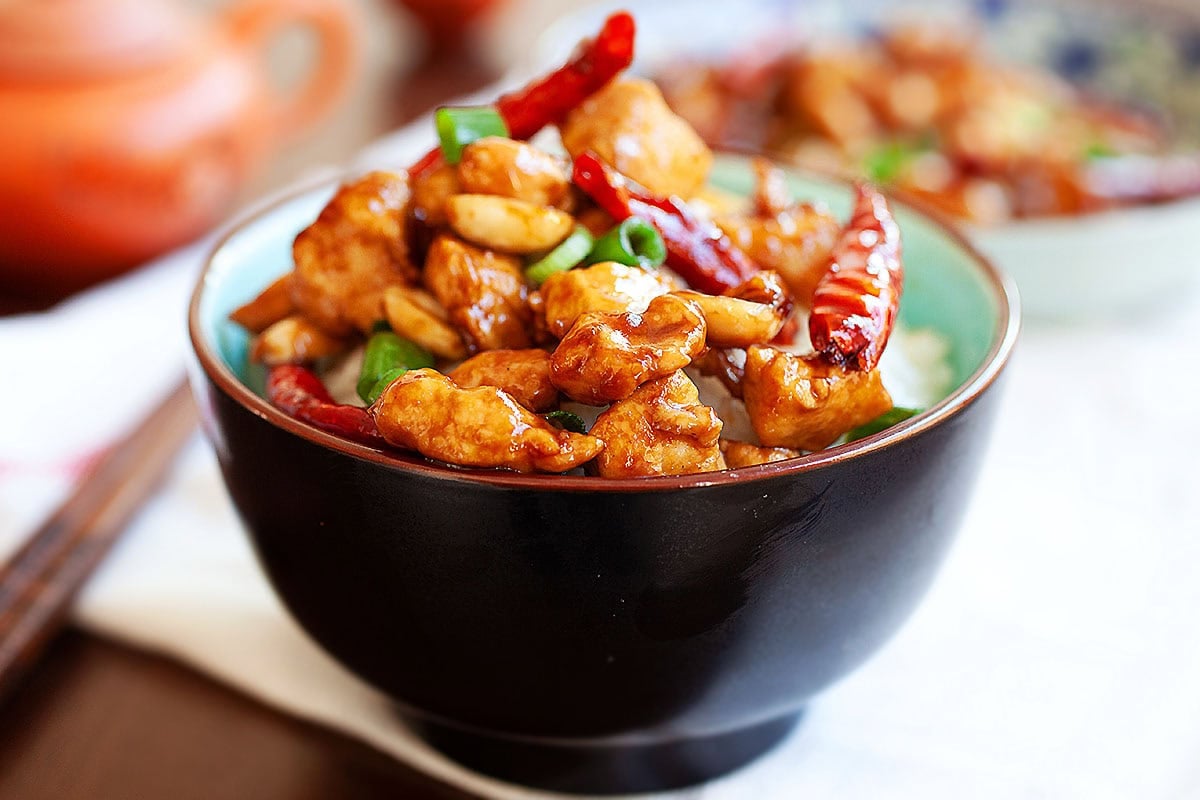
Scoop it onto a plate and serve it up with some steamed rice. Dig in while it’s hot!
Helpful Tips For Home Cooks
- I always let the chicken marinate for at least 30 minutes—it helps tenderize the meat and soak up all the flavor. Trust me, it’s worth the wait!
- Stir-frying works best on high heat, so I always make sure my wok or skillet is properly heated before adding oil. This way, the chicken gets a nice sear and won’t stick to the pan.
- If you can’t find Sichuan dried red chilies, dried arbol chilies, dried cayenne chilies, or Thai dried chilies work just as well. They’re easy to find in most grocery stores and still bring the right amount of heat and smokiness. Thai dried chilies, in particular, add a nice kick with a bit of extra aroma, making them a great swap.
- I stir-fry the dried chilies just until they’re fragrant—any longer, and they’ll turn too dark or even black, which can make the dish taste bitter. Keep an eye on them!
Frequently Asked Questions
Kung Pao or Gong Bao derived from Chinese words 宫保。According to Baike, a Chinese online encyclopedia, the dish was invented by a Sichuan General Ding Baozhen. He loved chicken and peanut in a spicy sauce, and hence he created the recipe. The name Kung Pao came from his honorary title and hence the name origin of this famous dish.
Traditionally, this recipe isn’t gluten-free because soy sauce and black vinegar contain wheat and other non-GF grains. However, you can easily make a gluten-free version by using gluten-free soy sauce, dark soy sauce, and black vinegar.
This recipe serves 3 people, with each person getting about 3 oz of chicken along with the other ingredients. If you’re cooking for more people or want a bigger portion, you can double or triple the recipe. Just be sure not to overcrowd the pan—stir-fry in batches if needed for the best texture. Also, taste the sauce before adding it, as soy sauce can make it saltier. Adjust as needed!
Yes, certainly. Just mix all the ingredients in the sauce well, and transfer it to a glass container. Keep it in the refrigerator for up to two weeks.
Yes! Vegetables like green beans, bell peppers, or zucchini work great. Add them after stir-frying the dried chilies, just before the chicken goes back in. Stir-fry for a minute or two until crisp-tender, then continue with the recipe.
Traditionally, peanuts are used, but cashew nuts are a great substitute. They add a slightly sweeter, buttery crunch to the dish. Just toast them lightly before adding for the best flavor.
Yes! Sichuan peppercorns bring a signature numbing heat to the dish. Lightly toast them in the wok before stir-frying the dried chilies, then crush them slightly to release their bold, citrusy aroma.
If you want more heat, try breaking the dried chilies before cooking to release their seeds. You can also add a spoonful of chili oil at the end for an extra kick.
Yes, you can freeze it, but I don’t recommend it. If you have leftovers, it’s best to store them in the refrigerator for a few days. When ready to eat, reheat in the microwave for about 30 seconds before serving.
This is a healthy recipe and only 360 calories.
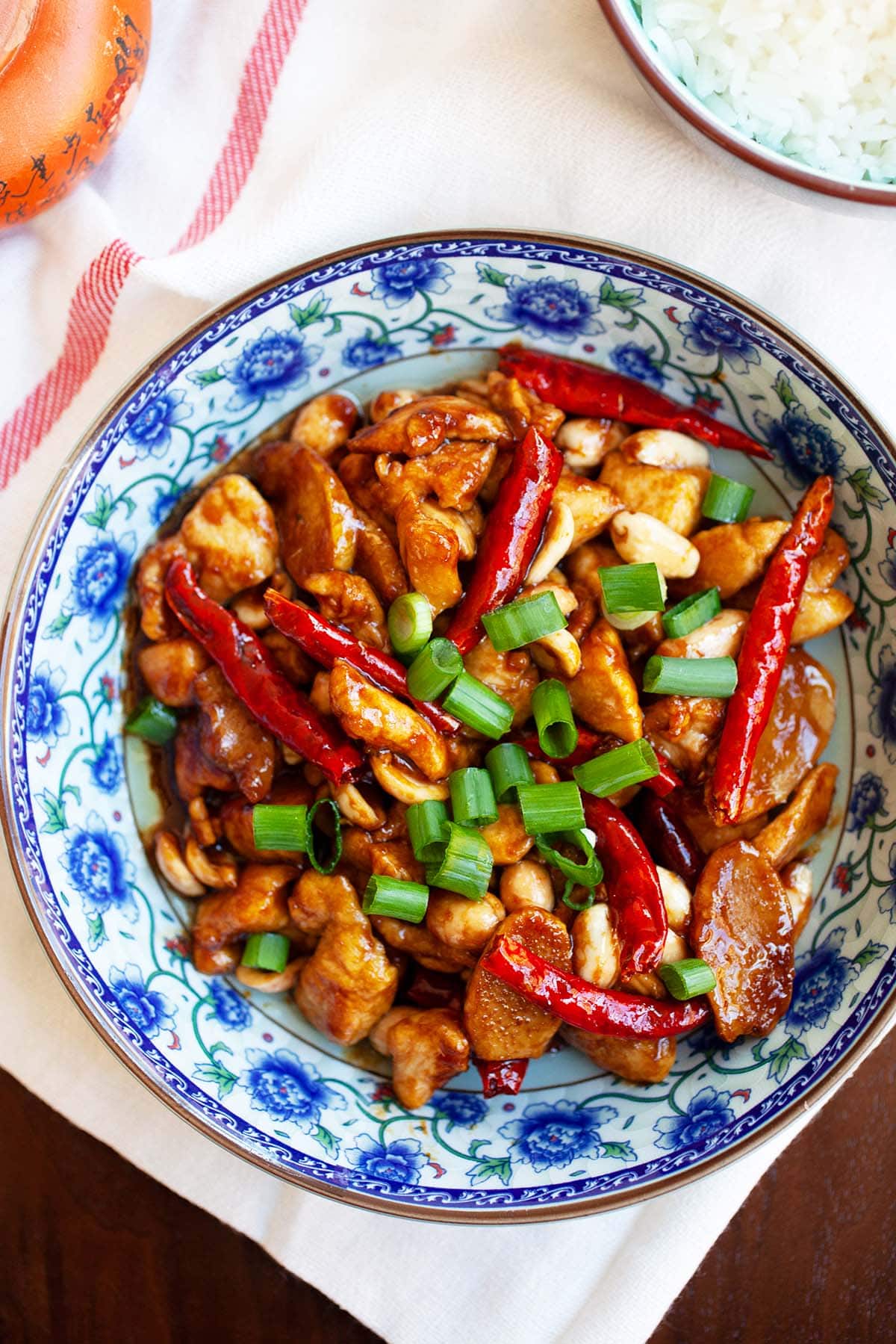
What To Serve With Kung Pao Chicken
Serve the chicken with steamed rice, fried rice or noodles. For a wholesome Chinese meal at home, I recommend the following recipes:
I hope you enjoy this post as much as I do. If you try my recipe, please leave a comment and consider giving it a 5-star rating. For more easy and delicious recipes, explore my Recipe Index, and stay updated by subscribing to my newsletter and following me on Facebook, Pinterest, and Instagram for new updates.
Other Chinese Recipes You Might Like

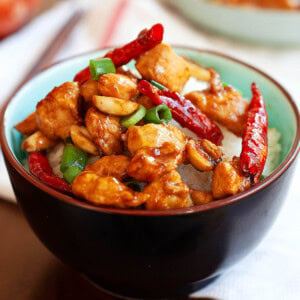
Kung Pao Chicken Recipe (The Best!)
Ingredients
- 12 oz. (350g) boneless & skinless chicken breasts
- 3 tablespoons roasted peanuts
- 6-8 dried red chilies, seeded and cut into halves
- 3 tablespoons oil
- 5 slices fresh ginger, peeled
- 2 cloves garlic, sliced diagonally
- 1 stalk scallion, cut into rings
Marinade:
- 1 tablespoon cornstarch
- 2 teaspoons soy sauce
- 1 tablespoon Chinese Shaoxing rice wine, optional
- 1 teaspoon oil
Kung Pao Sauce:
- 1 1/2 tablespoon soy sauce
- 1 teaspoon dark soy sauce
- 1 teaspoon sugar
- 1/4 teaspoon Chinese black vinegar
- 2 tablespoons water
- 1 teaspoon cornstarch
Instructions
- Rinse the chicken in water, then pat it dry with a paper towel. Cut the chicken into small cubes and marinate with the marinade ingredients for 30 minutes.
- Mix the ingredients for the Kung Pao Sauce in a small bowl and set it aside.
- Heat a wok with one tablespoon of oil and stir-fry the marinated chicken until it's 70% cooked. Remove it from the wok and set it aside. (The surface of the chicken should turn white and opaque, but it should not be fully cooked at this point.)
- Clean the wok or skillet with paper towels, then heat the remaining 2 tablespoons of oil until fully heated. Add the ginger and garlic slices, and quickly stir-fry before adding the dried red chilies.
- Stir-fry the dried red chilies until aromatic, then add the chicken. Briefly stir-fry before adding the roasted peanuts.
- Add the sauce and stir continuously until the chicken is well coated. Then, add the scallions and mix thoroughly with the chicken.
- Dish out the Kung Pao chicken and serve immediately with steamed rice.
Video
Notes
- You can try my Kung Pao Shrimp recipe. If you are a beef lover, you can make Kung Pao Beef.
- You can use rice vinegar, red wine vinegar, or apple cider vinegar instead of Chinese black vinegar. For the best and most authentic taste profile, go for Chinese Chinkiang Black Vinegar. I recommend Gold Plum Chinkiang Vinegar (镇江香醋).
- Different soy sauces vary in taste and sodium levels, so adjust the saltiness accordingly.
- If the sauce tastes too salty, add more sugar and water. If it’s not salty enough, add a little salt to taste.
- If you’re a seasoned home cook who values authenticity, consider adding 1 teaspoon of Sichuan peppercorns and 1 teaspoon of hot chili oil to my recipe. Feel free to adjust the amount of dried red chilies to suit your taste preferences.
- I always let the chicken marinate for at least 30 minutes—it helps tenderize the meat and soak up all the flavor. Trust me, it’s worth the wait!
- Stir-frying works best on high heat, so I always make sure my wok or skillet is properly heated before adding oil. This way, the chicken gets a nice sear and won’t stick to the pan.
- If you can’t find Sichuan dried red chilies, dried arbol chilies, dried cayenne chilies, or Thai dried chilies work just as well. They’re easy to find in most grocery stores and still bring the right amount of heat and smokiness. Thai dried chilies, in particular, add a nice kick with a bit of extra aroma, making them a great swap.
- I stir-fry the dried chilies just until they’re fragrant—any longer, and they’ll turn too dark or even black, which can make the dish taste bitter. Keep an eye on them!
Nutrition
Nutrition information is automatically calculated, so should only be used as an approximation.
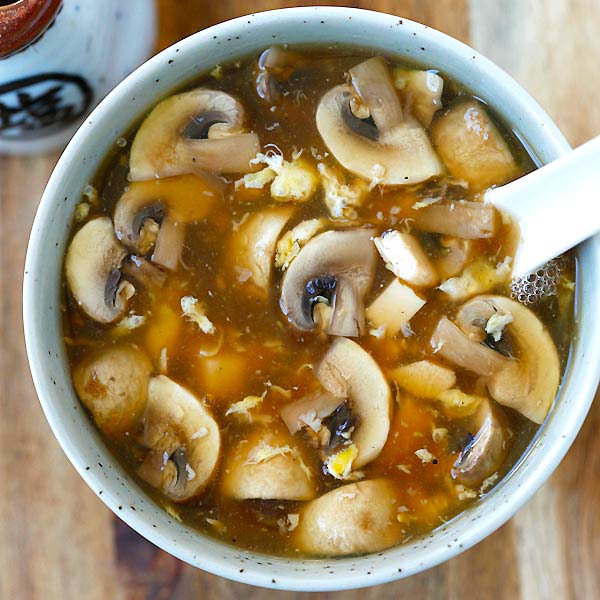
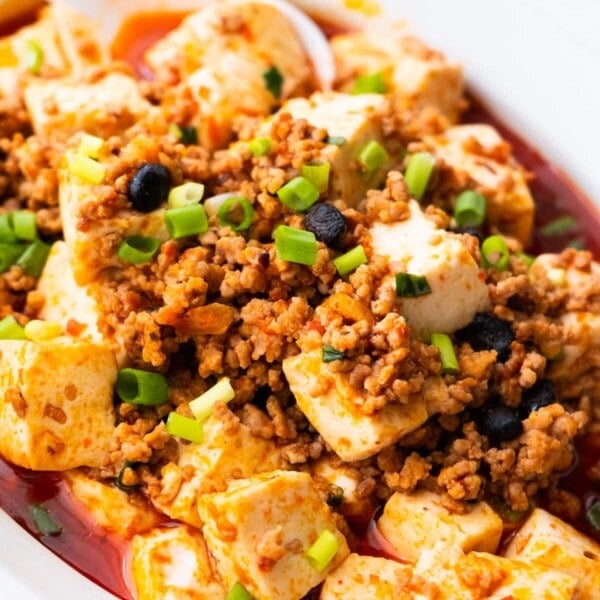
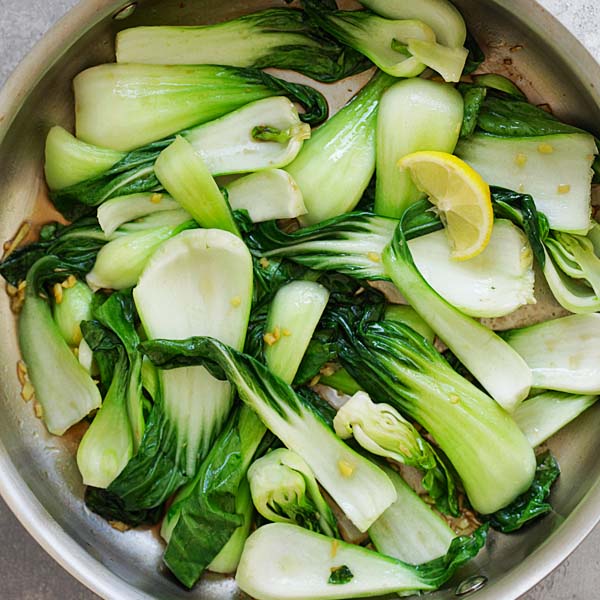
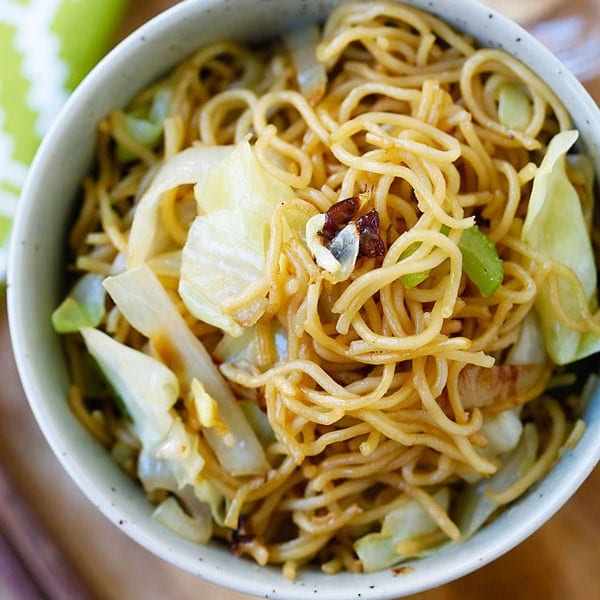






I’ve been making this recipe a long time. About the only sub I’ve made is ordinary dry white table wine instead of Chinese Shaoxing rice wine which I can only find in Asian supermarkets–of which the closest is more than 50 miles away. One of the things I like best about this recipe–aside from it’s ease of prep and economy–is that it’s not overly sweet. That 1 tsp of sugar is useful to balance the vinegar and chilies, so I do add it. I also up the black vinegar to 1 ta unique and delicious flavor. Most of the “Chinese” restaurants in my area seem to think those of us in the US LOVE sweet food–consequently, I usually cook those foods myself that I would carry out if I could find some up to my taste standards.
I’ve been enjoying your recipes for years!
Hi Janmaus, thanks so much for trying my recipe and for the 5 stars! :) I really appreciate your support!
Never wash/rinse chicken as bacteria like Salmonella and Campylobacter, which can cause food poisoning, can spread. If cooked properly there is no risk to health.
That’s not true. We wash chicken my whole life and there has never been an issue.
Thank you so much girl. It’s hard to find authentic recipes th3se days. It’s lost overtime
Hi Dimitri, thanks for trying my recipe! :)
Hello, I would love to try this recipe, but for me I don’t see any veggies except the scalions. Do you think it might be good to add some? Like green beans, or red peper bell, or other? If possible, at what moment should they be added? Thank you for your advice.
Hi Mana. Thank you for your comment. Feel free to add in veggies of your choice. You can add them in the last 5 minutes of cooking.
This is similar to the Kung Pao recipe I’ve been making for decades and so much better than what anyone is likely to find in a local Chinese take-out that the two probably don’t even bear comparison. Hooray for RasaMalasie–keep these good recipes coming!
Thank you for your comment. Very glad the recipe works well for you.